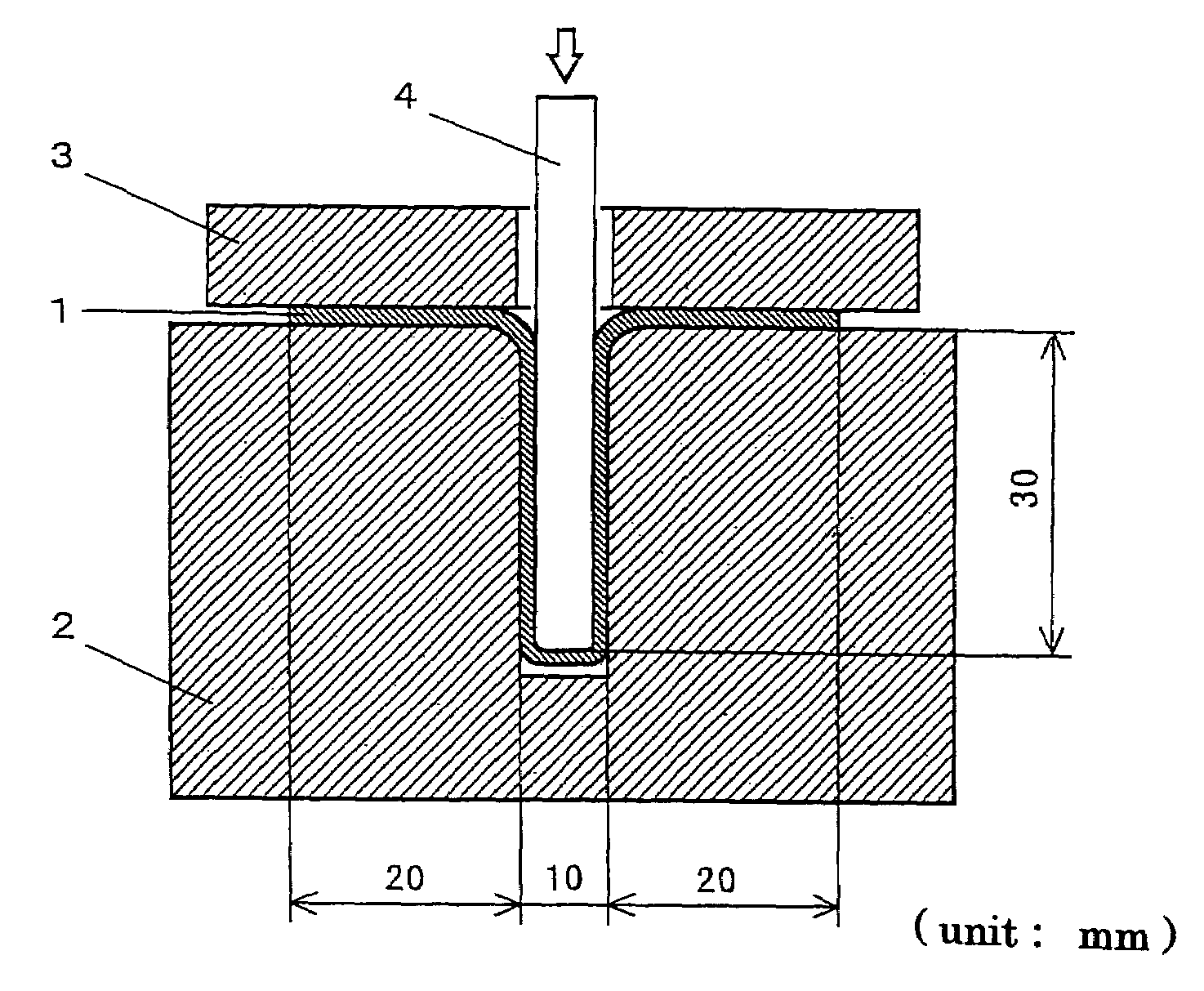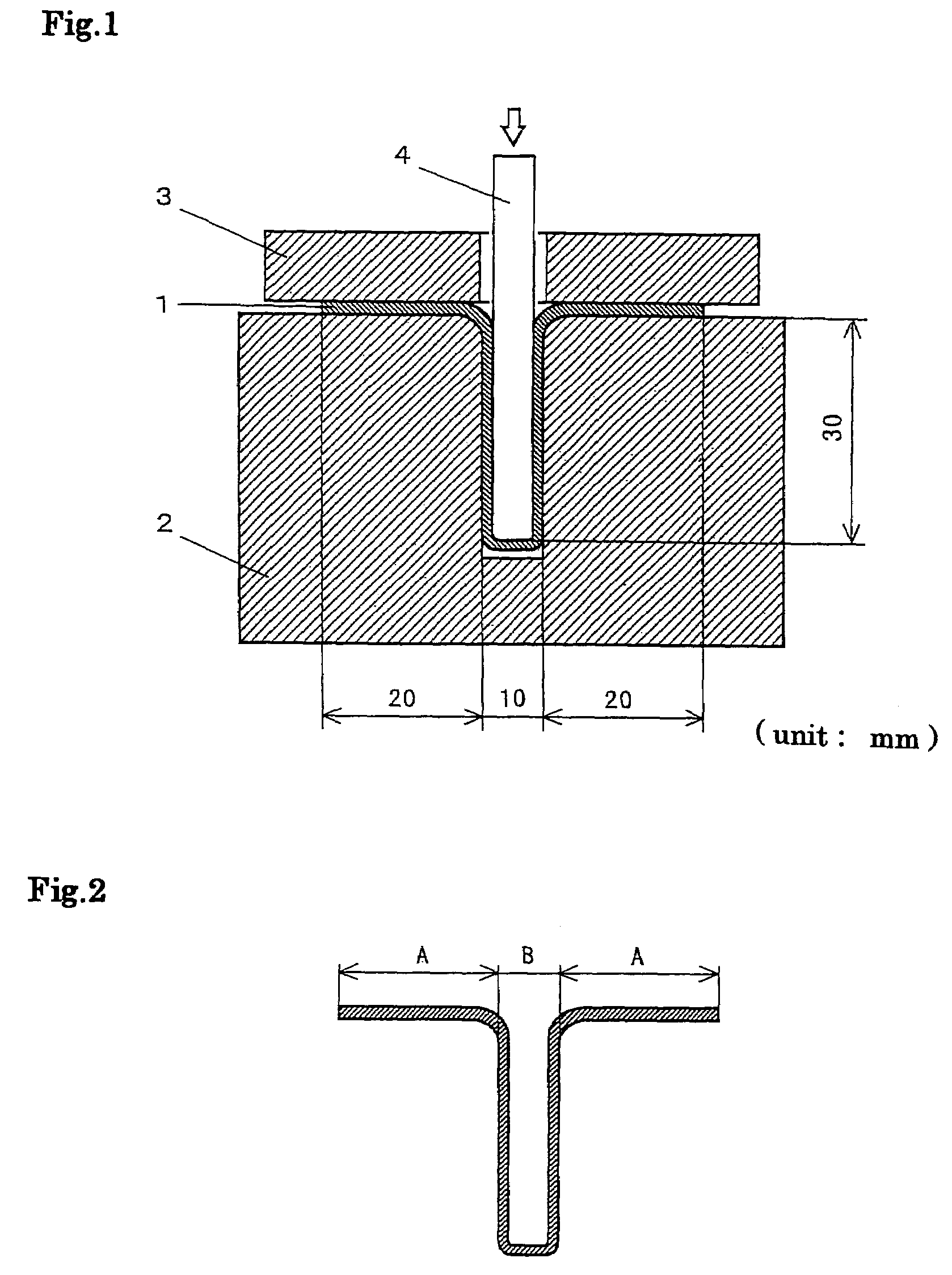Austenitic stainless steel
a technology of stainless steel and stainless steel, applied in the field ofaustenitic stainless steel, can solve the problems of neither the weldability necessary, nor the deformation of austenitic stainless steel, and achieve the effect of reducing the deformation
- Summary
- Abstract
- Description
- Claims
- Application Information
AI Technical Summary
Benefits of technology
Problems solved by technology
Method used
Image
Examples
example
[0058]Fourteen kinds of austenitic stainless steels, having chemical compositions shown in Table 1, were molten in order to make steel ingots, and the resulting steel ingots were then heated to 1200° C. and formed into objects which are 20 mm in thickness by hot forging. The objects were then heated to 1200° C., and hot rolled, with a working ratio of 5, to make steel plates of 4 mm in thickness.
[0059]Each of the resulting steel plates was partially cut and subjected to a solution heat treatment by maintaining at 1100° C. for 15 minutes followed by cooling with water, and resulted in a welding test piece of 4 mm in thickness, 100 mm in width, and 100 mm in length. The test piece surface was then wet-polished with emery paper No.600, and the Transvarestraint test was carried out under the following conditions.
[0060]Each of the remaining steel plates was annealed at a temperature of 1100° C. for 15 minutes, and then made into a “cold rolled steel plate of 0.3 mm in thickness” by repea...
PUM
| Property | Measurement | Unit |
|---|---|---|
| thickness | aaaaa | aaaaa |
| thickness | aaaaa | aaaaa |
| width | aaaaa | aaaaa |
Abstract
Description
Claims
Application Information
 Login to View More
Login to View More - R&D
- Intellectual Property
- Life Sciences
- Materials
- Tech Scout
- Unparalleled Data Quality
- Higher Quality Content
- 60% Fewer Hallucinations
Browse by: Latest US Patents, China's latest patents, Technical Efficacy Thesaurus, Application Domain, Technology Topic, Popular Technical Reports.
© 2025 PatSnap. All rights reserved.Legal|Privacy policy|Modern Slavery Act Transparency Statement|Sitemap|About US| Contact US: help@patsnap.com


